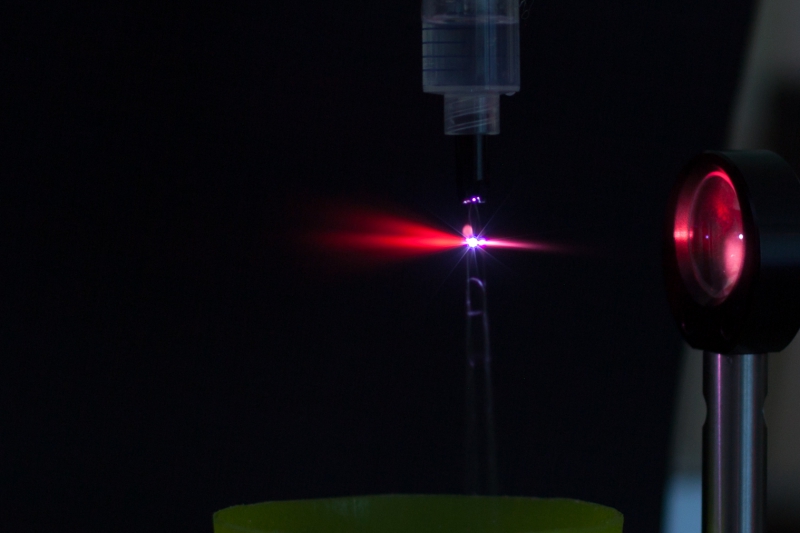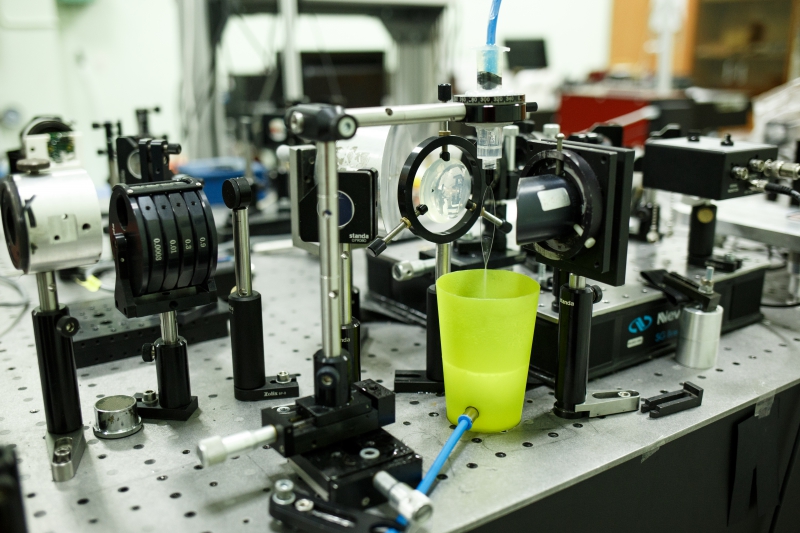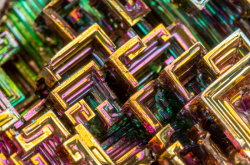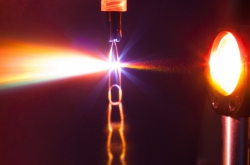Terahertz technologies: spectroscopy, security, biomedicine, and non-destructive diagnostics
Terahertz radiation is a type of electromagnetic radiation located within the frequency spectrum between infrared and radio. It passes well through a variety of materials, such as wood, plastic, and ceramics.
These properties provide terahertz sources with a variety of practical applications. For one, THz radiation can be used in security systems such as luggage scanners in order to detect hidden metal, plastic, and other kinds of objects.
In addition, unlike X-ray radiation, terahertz radiation is completely harmless to the human body, which is why the main potential field of application for THz is medicine and biomedical research. THz-spectroscopy and -visualization methods are widely used in biophotonics. Technologies such as these help specialists visualize various elements of tissue such as cells, microfibrils, and even cell organelles (read more about THz-based diagnostics and visualization technologies in our interview with Olga Smolyanskaya, the head of ITMO University’s Femtomedicine Laboratory).
Terahertz sources
Due to its wide range of applications, the majority of current-day research on terahertz radiation concerns the search for new, more stable, powerful, and effective sources. The golden standard, and the most common sources of THz radiation, are solid-state materials, although air- and gas-based sources also exist.
It was previously thought that the same cannot be achieved with a liquid medium. Polar liquids, and especially water, are strong absorbents of THz range electromagnetics waves, and therefore were never considered as good options for terahertz sources.
ITMO-Rochester joint research
Last year, an international research team from ITMO University and the University of Rochester had shown that liquid radiation sources can be no less effective than their traditional counterparts and developed a theoretical model depicting the nature of this phenomenon. The researchers also noted that liquids exhibit a number of advantages over other mediums, such as gases.

Advantages over gases and solid-state materials
As per widespread belief, when laser radiation undergoes filamentation in a gaseous medium, the efficiency with which terahertz radiation is generated depends on the density of free electrons. The number of free electrons of a single molecule depends on the binding energy, which is the energy required to detach an electron from its outer orbit. The density of molecules in liquids is much higher than in gases, which means that the same amount of excitation energy can generate a much larger number of electrons, thus amplifying the terahertz radiation. The difference between the required binding energies in gas and liquid is insignificant.
Compared to solid-state sources, liquids, too, have a number of advantages. First off, they can sustain a higher amount of excitation energy, resulting in a stronger energy output. They are also cheaper and more accessible.
New findings
The researchers’ main task remains the same: to solve the issue of absorbency. To provide a solution, physicists from ITMO University experimented with finding the optimal type of liquid, the thickness of jets, the strength of excitation radiation, and a number of other parameters.
In an article published by Optics Express, the scientists describe the efficiency of THz radiation generation in liquid jets under single-color excitation. The study involved several types of liquid: water, ethanol, heavy water, and acetone. These liquids were chosen for their difference in the parameters that were of interest to the researchers.
“In our research we present a complex approach; there is both an experimental section and a theoretical assessment. We tested a number of liquids and the different characteristics of the laser excitation radiation and the medium itself,” comments Evgenia Ponomareva, a co-author of the article and a staff member of the Laboratory of Femtosecond Optics and Femtotechnologies. “We have analyzed liquids with various parameters of binding energy, density, and THz absorption. The results of our research have shown that each of these parameters is crucial to the effort of increasing the efficiency with which radiation is generated. Experiments also proved that, compared to water, acetone provides a higher output efficiency. Even at first approximation, these results allow us to assess the potential of using certain liquids for these purposes.”
The researchers have also demonstrated how the qualities of a medium, which include molecular density, binding energy, and linear absorption, affect the efficiency with which THz radiation is generated in a liquid. Experimental data showed that the dependency between THz radiation energy and the energy of the excitation pulse is quasi-quadratic in character. As Evgenia Ponomareva explains, this results in a sharper increase of THz output as the excitation energy is increased. The researchers are intent to continue their research and provide a theoretical basis for this aspect.

The study also includes a theoretical prediction and experimental confirmation of the optimal pump pulse duration, which depends on the thickness of the jet. The resulting efficiency of optical-to-terahertz energy conversion is more than 0.05%, which is comparable to the results produced by laser filamentation in gas mediums.
Prospects
In the future, these results can be applied in the creation of a new alternative THz radiation source. For their future research, the scientists plan to examine a large number of various liquids, both polar and nonpolar, and are already in the process of procuring the necessary materials. Their end goal is to compile a database of liquids in order to understand which ones have the potential for future use.
They also plan to soon continue their experimental study of THz radiation generation in various liquids, including under double-pumping, as well as to study the various parameters of laser radiation and to continue developing theoretical models.

In 2019, the researchers have been awarded a three-year grant from the Russian Science Foundation. In that time, they hope to assemble a system that would prove the efficiency of conversion comparable to that in two-color filamentation in gas mediums. Their work, however, will continue after the three-year mark; the researchers say they see great prospects for the development of this subject.
“Liquids are a universal and cheap source. They don’t have a damage threshold like, say, crystals, which is why in the future they might become a commonplace source of terahertz radiation,” explains Evgenia Ponomareva. “Right now, it is important that we understand how we can modify the parameters of laser radiation itself. We’re also working on modifying the wavelength. There are theoretical suggestions that if we were to continue shifting into the IR spectrum, the efficiency of conversion will be higher by several times. That’s why our project aims not only to study the liquids and the properties, but also to provide a complex approach on the experimental increase of conversion efficiency and to learn about the physics of this process.”




